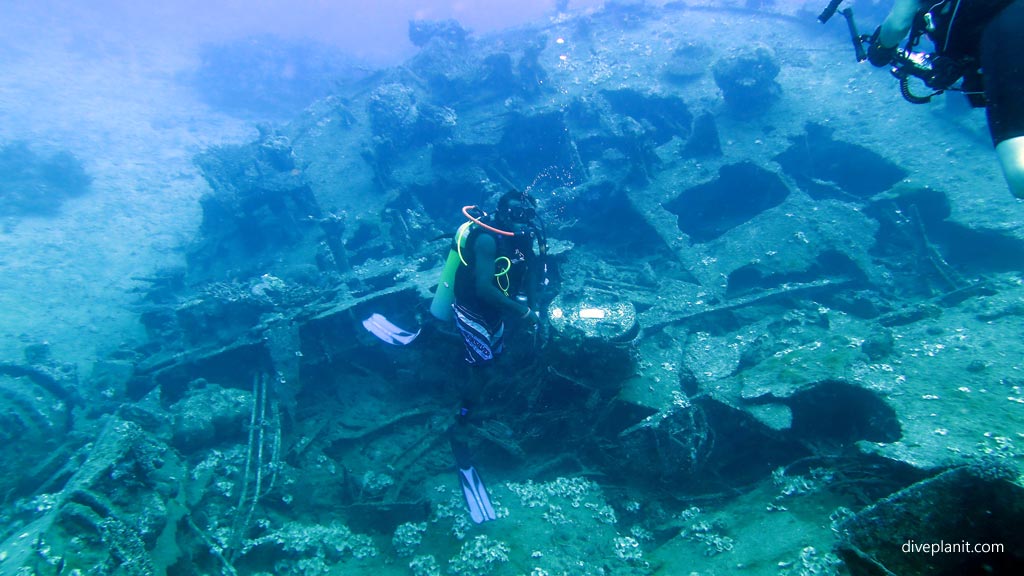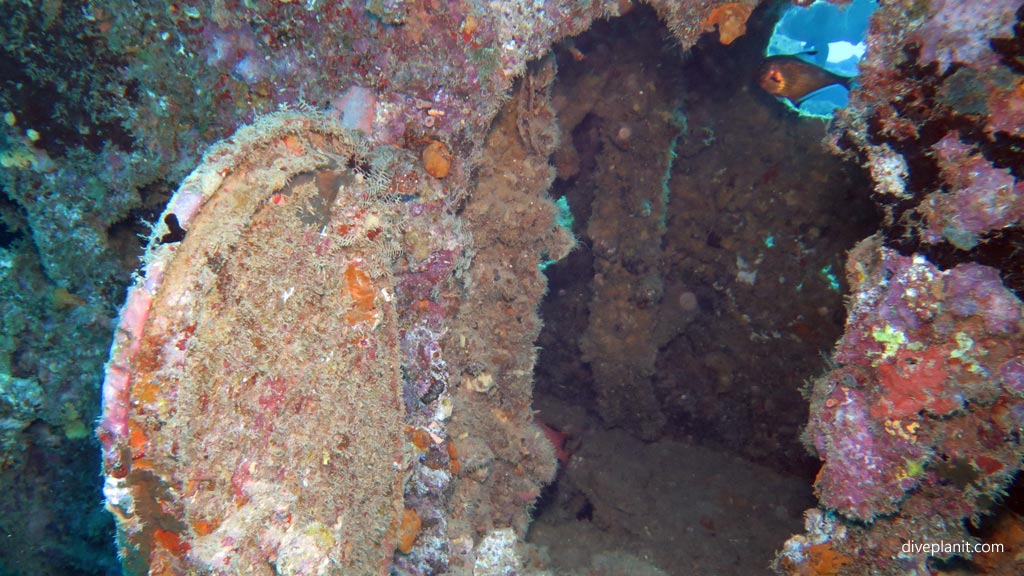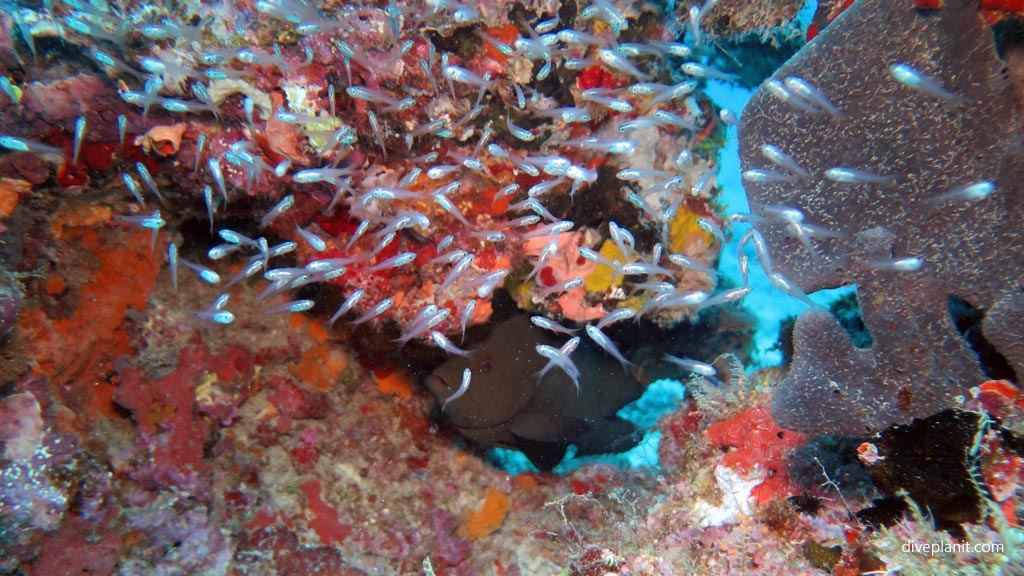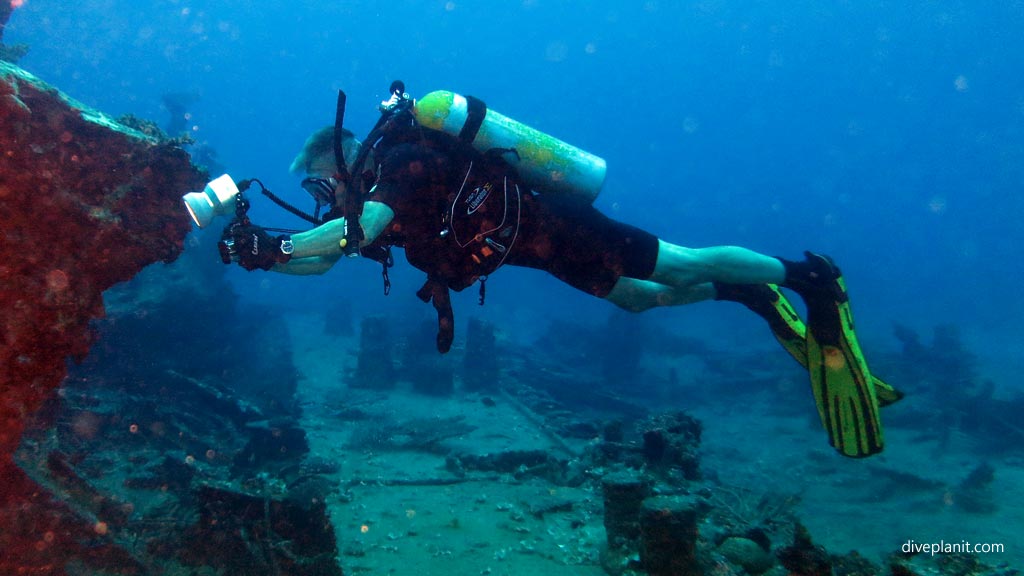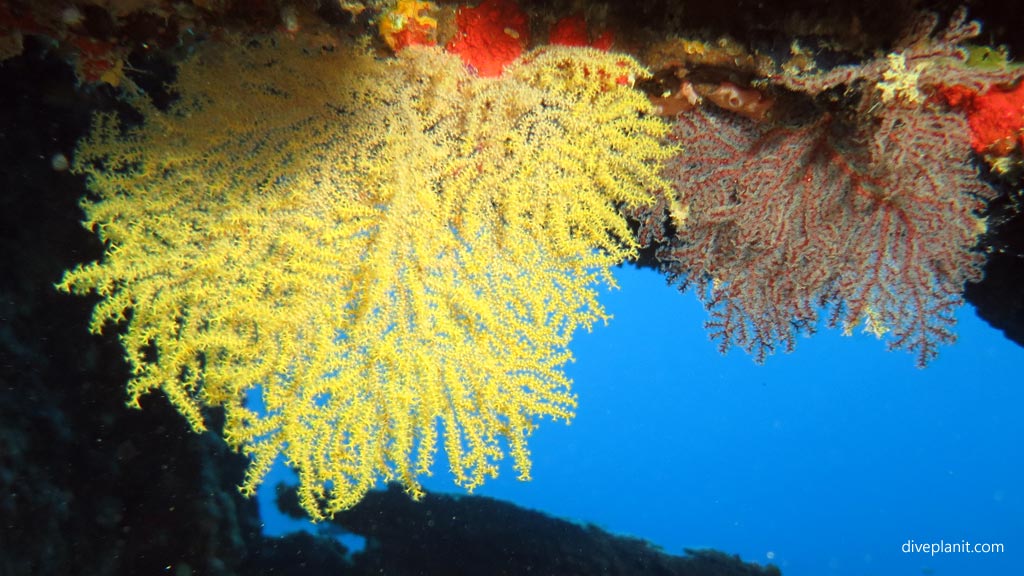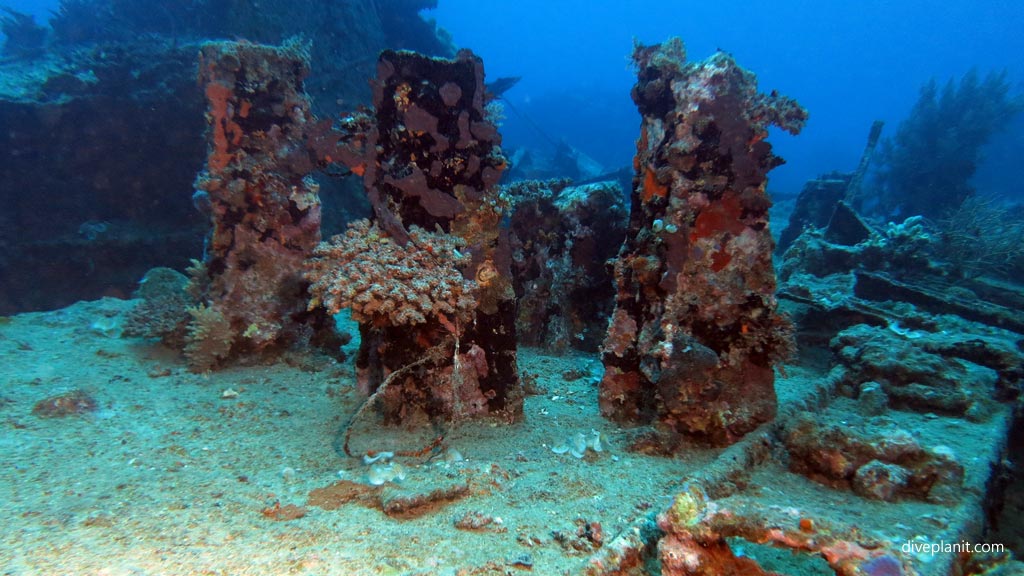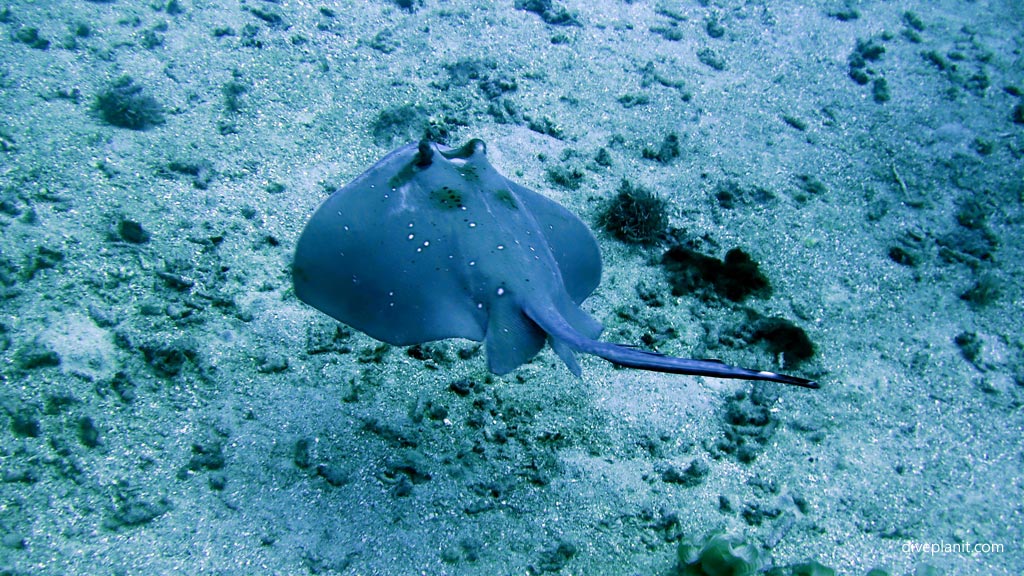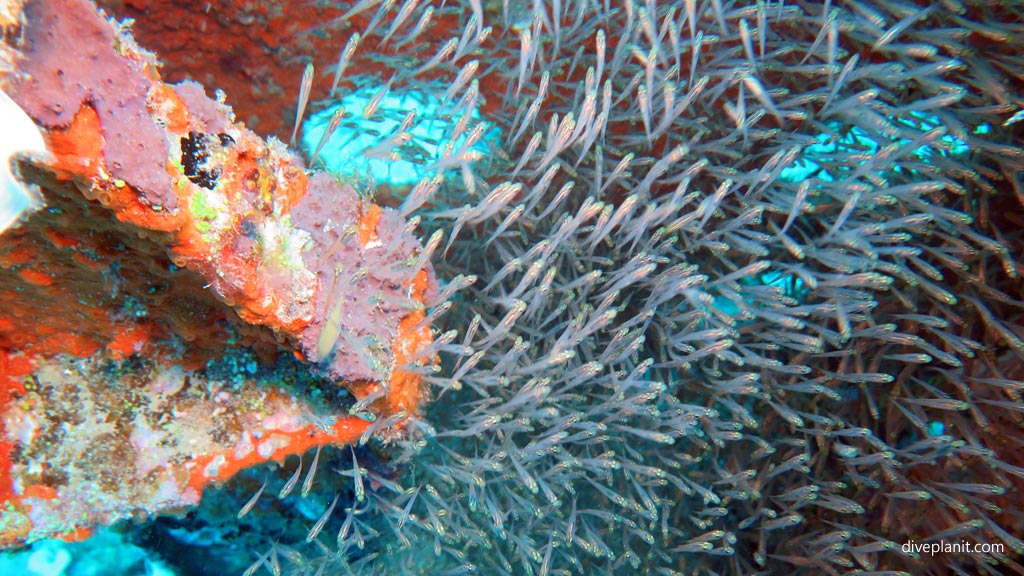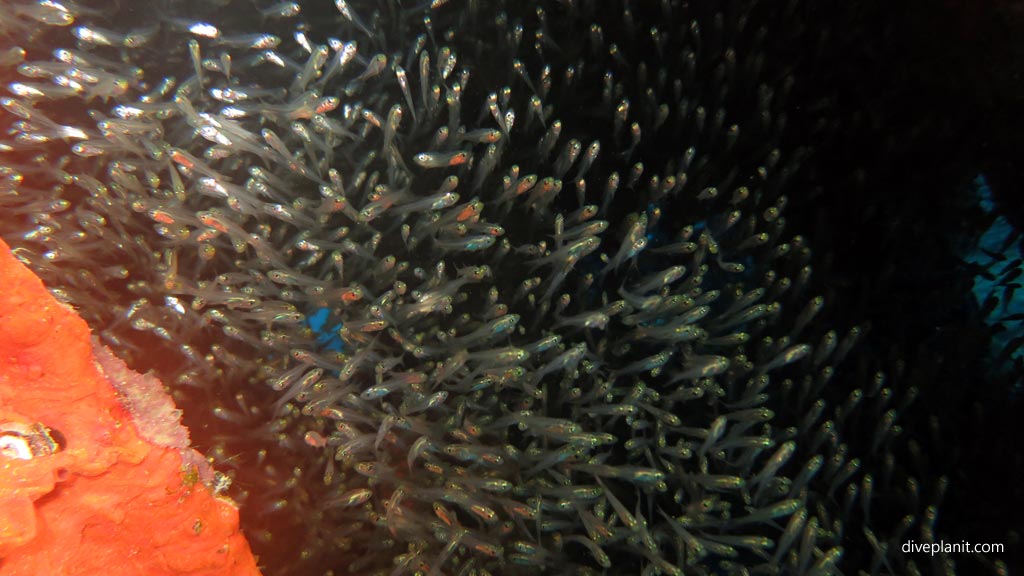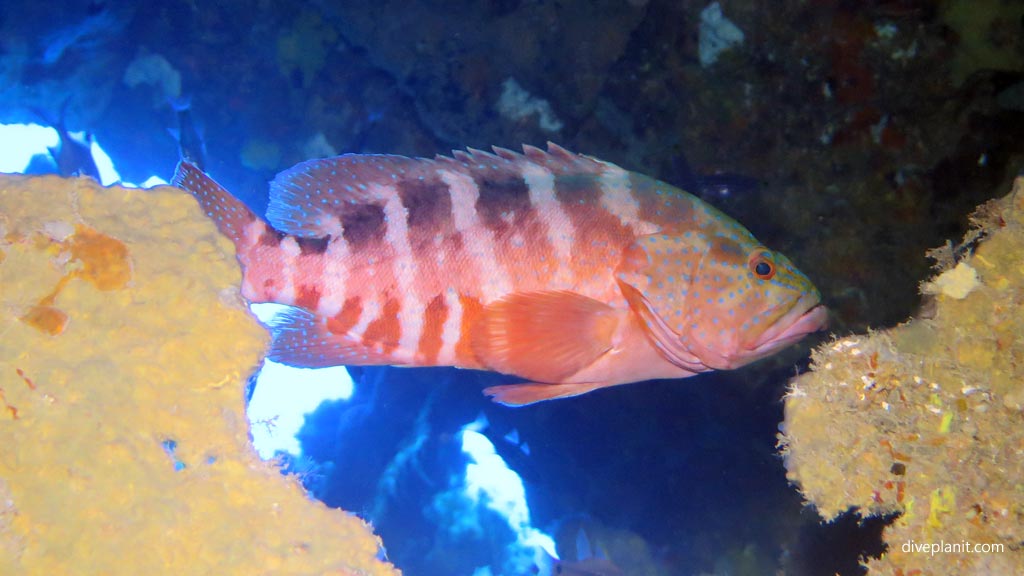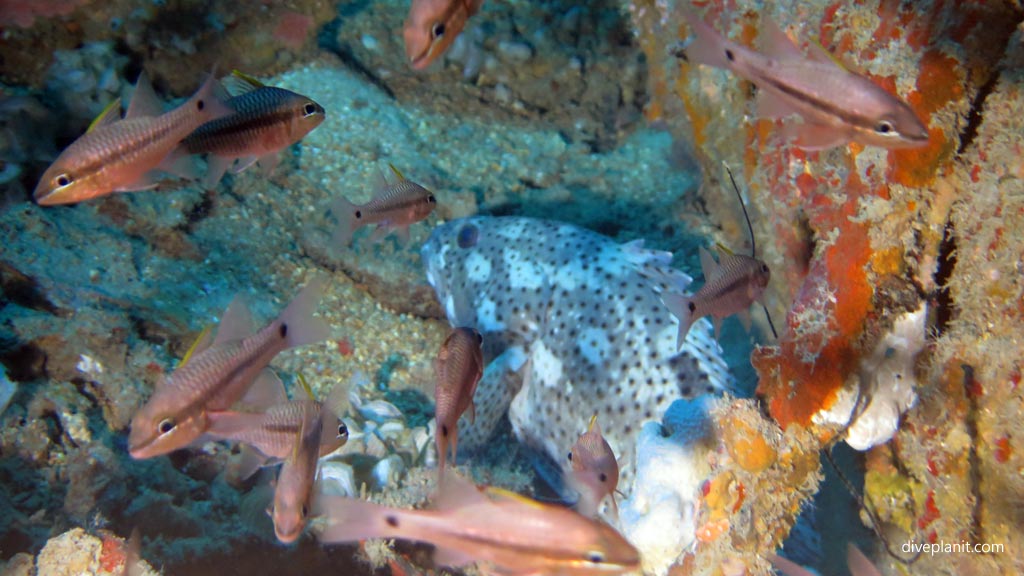| Site Type: | Wreckage turning to reef |
| Depth: | Top: 17M Bottom: 21M |
| Location: | Roughly where the Bruat Channel turns into the Segond Channel on the west point of Aore Island, Santo Espiritu |
You can and should Wikipedia the USS Tucker (DD-374). Almost as interesting is the story of Samuel Tucker – her namesake.
The USS Tucker was a destroyer built in August 1934. At 104m long and displacing 1,500 tons she was a pretty impressive ship. Whilst escorting a cargo ship from Suva to Santo, she struck an American mine amidships on 4 August 1942. The exploding mine nearly tore her hull in two at the No. 1 stack. Three on watch were killed, but the rest of the crew were saved. The stern sank the following morning and bow was deliberately scuttled.
This is reflected in what’s left of the wreckage – which has been thoroughly ransacked over the years. Still, it’s a great dive site with a lot of time spent trying to identify each of the major components you discover as you traverse the site from the two recognisable ends: stern and bow.
Here’s a little video showing some of the different sections of the USS Tucker. There are clearly bits of prop shaft, bow and stern, but it would have been great to see a schematic before going down to be able to identify some of the larger pieces. I’ll be doing my research before I go back.
The mooring point at the dive site is on the wreck’s stern and the ship is in three distinct parts: the stern – which is largely intact as a recognisable piece of ship; a place in the middle where the middle of the ship should be but with remnants of that middle scattered far and wide; and finally a piece that also still looks like the bow of the ship.
The average depth is 24m.
At the stern there is an entrance hatchway with a door and handle still attached.
Every nook and cranny is teeming with juvenile fish.
There’s lots of cabling visible and a few very surprised fish seeing the sun rise in their little hideaway when I shined my new 150W light in there.
All the expose rails have coral growths both hard and soft.
What looks like the prop shaft disappears into what looks like a turbine housing though no pistons or camshaft can be seen. (It would be great to come back here and do a more methodical survey to at least establish which parts of the wreck were which parts of the original destroyer).
The middle section is literally blown away; there are parts scattered far and wide and all sorts of larger fish here as well as the dogface puffer, Giant Triggerfish, sweet lips, rays and parrotfish.
Some vertical standing sections closer to the bow appear to house the nurseries of shoals of the next generation.
Literally teeming with millions of juvenile fish.
Inside the bow section we chased two very unwilling Six Banded Rockcod who did not want to stay still enough for long enough to be photographed.
Unlike the Camouflaged Rockcod who sat quietly in the corner hoping that no one would spot him.
The trip back across the length of the ship from bow back to stern gives an impression of the size of the original destroyer. There must have been subsequent explosions as she went down, as the original mine simply holed her causing her to jack-knife.
A fantastic dive which I’d do a couple of times over – the first dive is literally just an orientation.

